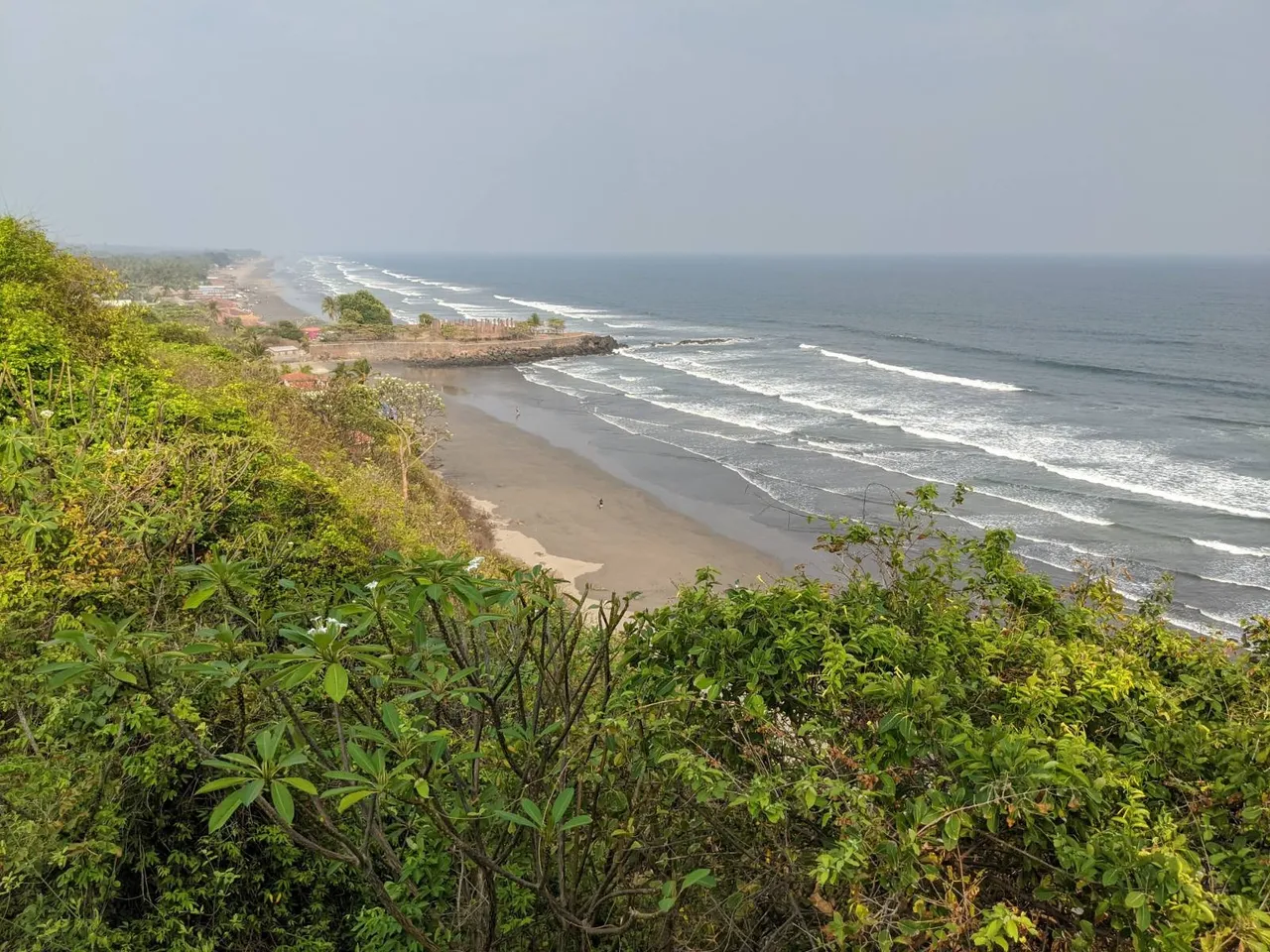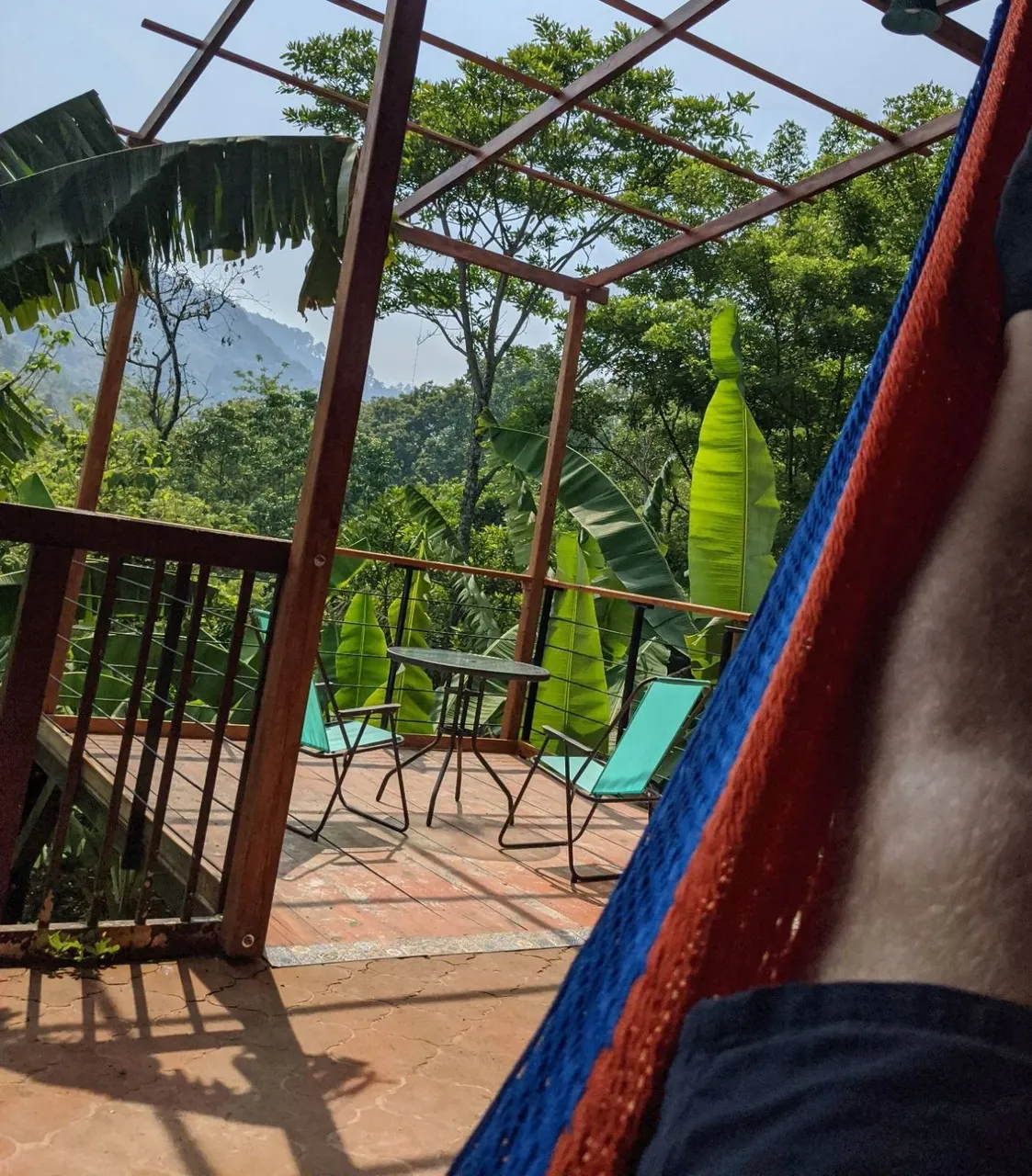After arriving at the international airport in El Salvador, most Bitcoin tourists go straight to the coastal town of El Zonte, a.k.a. Bitcoin Beach. While this is a great place to go surfing and meet foreigners, there are plenty of other beautiful sites that El Salvador has to offer.
In this post I'm going to write about the hot beaches of San Miguel and the cooler rainforests of Morazan, both of which are located on the eastern side of El Salvador.
San Miguel
The best way to get to San Miguel is by car, and it's about a 2-3 hour drive from San Salvador, the capital. Along the way you can stop to buy pumpkin ice cream and bags of cashews from street side vendors.
San Miguel is both a city and a "departamento" - how provinces are called in El Salvador. At the southern tip of San Miguel is a long beach called El Cuco, which is lined with palm trees and is better suited for swimming than the rough waters of El Zonte.

There are also no boulders or rocks that you have to worry about while getting pushed around by the waves here, so you can enjoy the sandy bottom of El Cuco in peace.
While eating out at one of the restaurants along the beach I asked if they would accept Bitcoin, but their answer was a straight "no". Well, at least they knew what Bitcoin was and didn't just give me a strange look!
There's a Walmart as you enter the city, which has everything you could possibly need. They will accept Bitcoin, so long as you tell the cashier before scanning your items. Unfortunately, the popular restaurant we went to afterwards was not accepting Bitcoin payments.
Whenever you bring up San Miguel with the locals they will often talk about how hot it is. While San Salvador may be experiencing a high of 34 degrees, the city of San Miguel will reach highs of 40 plus, so air conditioning is an absolute must!
Morazan
To escape the heat of the city, you can travel up to the northern neighboring province of Morazan, and to the town of Perquin, where you will find fantastic views of the lush hillsides, as well as plenty of history related to the civil war that happened there throughout the 70s, 80s and 90s.

The air is much cooler in the hills of the north as you're at a higher elevation. The temperature will drop below 20 degrees at night, and many interesting and creepy creatures come out of the woodwork, especially during the rainy season (May - Oct).
A nearby cafe in the forest which overlooked the road below offered coffee and pupusas for breakfast, but alas, they were also not accepting Bitcoin as payment for their meals.
If you have a 4x4 type vehicle you can venture outside of Perquin to see a variety of waterfalls. The roads outside the town are made of dirt and pebbles and sometimes large rocks, so your typical rental car won't cut it.
There was a gas station in San Miguel that had a sign posted indicating that they accept Bitcoin, but when asked if they would accept it, they said you need to have a specific app (PaySea) installed on your phone for it to work.

I'm not sure if this was true, or if they just didn't want to bother with a Bitcoin payment. There is a wallet used in El Zonte called "Bitcoin Beach", and I recall some small shops that posted QR codes that my lightning wallet wouldn't scan. It could be a similar setup here.
Conclusion
It would seem that merchants are more hesitant, or not quite equipped yet, to accept Bitcoin payments in this part of El Salvador. Despite that, the beaches and forests are breathtaking, and you can learn more about the nation's history as well.
I still think it will take a prolonged banking crisis or hyperinflation before most people are finally pushed to transact with cryptocurrencies, and we seem to be getting closer to that inevitability by the day.